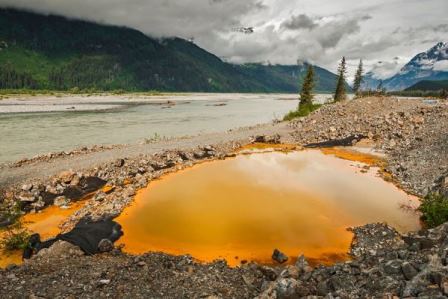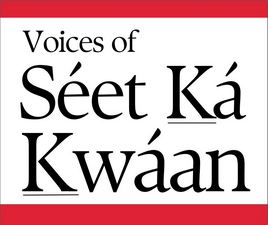
Efforts to clean up a defunct Canadian mine across the border from Southeast Alaska have been stalled by creditors who are owed millions by the mining company.
The Tulsequah Chief mine is upriver from Taku Inlet about 40 miles from Juneau. It hasn’t produced gold or other commodities since the 1950s and has been leeching acidic runoff for years. Alaska officials and tribal leaders on both sides of the border have been urging a cleanup of the site.
B.C. mining officials had announced they’d step in after the latest mine owner Chieftain Metals missed key deadlines to fix environmental problems. But according to filings in an Ontario court, the cleanup is now held up by a Toronto investment firm owed at least $20 million for investing in a failed effort at restarting the mine about a decade ago.
Chris Zimmer of Rivers Without Borders in Juneau has been tracking the legal obstacles to remediating the site.
“It’s actually a big creditor, West Face Capital, who made a stupid investment in a very risky mine — they lost their investment,” Zimmer said. “Now, they’re abusing the bankruptcy laws to try to keep the mine in bankruptcy and somehow sell it and make some of their money back.”
A court motion by the province of B.C. argues Chieftain Metals has been given many chances and shouldn’t be given unlimited time to become solvent and resell the mine. Especially as much of the cleanup will likely be done at Canadian taxpayers’ expense.
The province’s lawyers has asked the court to set a hard deadline of not more than two years for the the creditors to court new investors or quit its claim to the mine. The investment group has argued against setting a timeline.
“The province of British Columbia does not object to the creditor having two years within which to move for another appointment, but does object to the granting of an unlimited period,” the B.C. province’s attorneys wrote the court. “It objects because due to the mine operators’ failure to address acidic drainage into the watershed, the province has begun to take steps toward the implementation of a remediation and closure plan for the mine.”
A B.C. mining ministry spokesperson declined to comment on when the closure plan might commence. But noted that the Ontario court proceedings create “legal sensitivities and challenges that would otherwise not exist.”
The bankruptcy hearing that could break the impasse is scheduled for August 11 at the Ontario Superior Court of Justice in Toronto.











